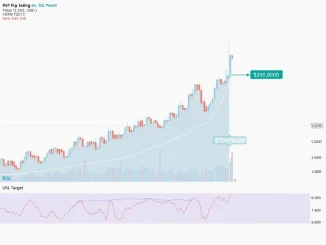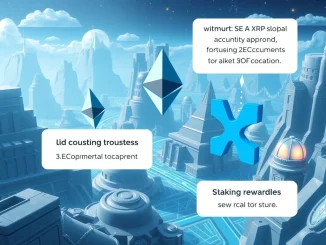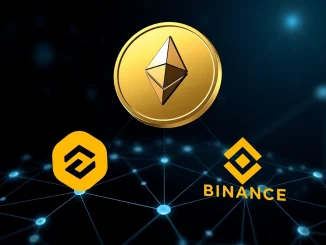
The cost of using the Ethereum network saw a significant jump this past week. According to data shared by Sentora (formerly IntoTheBlock) on X, total weekly Ethereum fees surged by a staggering 160%, reaching $13.23 million. This sharp increase points directly to heightened Ethereum network activity and greater demand for block space.
To put this jump into perspective:
| Metric | Previous Week (Approx) | This Week | Increase |
|---|---|---|---|
| Total Weekly Fees | ~$5.09 million (Calculated: $13.23M / 2.6) | $13.23 million | 160% |
This significant rise in Weekly Ethereum fees highlights the competitive nature of securing a spot in the network’s blocks.
What’s Driving the Rise in Weekly Ethereum Fees?
The fundamental reason for rising Weekly Ethereum fees is simple economics: demand exceeding supply. The Ethereum network can only process a limited number of transactions per block. When more users want to transact than there is space available, they compete by offering higher “tips” (priority fees) to validators to get their transactions included faster.
Sentora’s report highlights increased “on-chain activity” as the fuel for this surge. This activity can stem from various sources:
- Increased trading volume on decentralized exchanges (DEXs).
- Higher interaction with DeFi protocols (lending, borrowing, staking).
- Minting or trading non-fungible tokens (NFTs).
- Significant movements of stablecoins.
- Increased bridging activity between Ethereum and Layer 2 scaling solutions.
Each of these actions consumes ‘gas’, the unit of computational effort on Ethereum. More actions mean more gas consumed, and higher demand pushes the price of gas up, leading to higher total fees collected.
Understanding Ethereum Transaction Fees
If you’ve ever used Ethereum, you’ve paid Ethereum transaction fees. These fees, often called ‘gas fees’, are necessary payments to validators who process and validate transactions and secure the network.
Since the EIP-1559 upgrade, the fee structure includes a base fee that is burned (removed from circulation) and a priority fee (tip) that goes to the validator.
The base fee adjusts automatically based on network congestion. Higher congestion means a higher base fee. The priority fee is set by the user to incentivize validators to include their transaction quickly.
The total Ethereum transaction fees paid by a user depend on the complexity of their transaction (gas limit) and the current gas price.
The Impact of High ETH Fees
Rising ETH fees have mixed implications:
For Users:
- Higher cost per transaction, making small transfers or interactions expensive.
- Can price out users, especially in regions with lower purchasing power.
- Incentivizes migration to Layer 2 solutions where fees are typically much lower.
For the Network/Protocol:
- Increased burning of the base fee component, contributing to ETH’s deflationary mechanics.
- Higher priority fees mean more revenue for validators, incentivizing network security.
- Indicates strong demand and usage of the network.
While high fees signal network demand, they pose a significant usability challenge for many potential users.
Ethereum Network Activity: A Closer Look
The 160% jump in Ethereum network activity leading to the fee surge wasn’t a single event but likely a confluence of factors. Market volatility, new protocol launches, or increased interest in specific sectors like DeFi or NFTs can all contribute to a sudden spike in on-chain actions.
Monitoring metrics like daily active addresses, transaction counts, and gas consumption by contract type can provide deeper insights into which activities are dominating network usage at any given time. The recent jump suggests a broad increase in engagement across the ecosystem.
Navigating Rising Ethereum Fees
What can users do when faced with high Ethereum fees?
- Utilize Layer 2 Solutions: Networks like Arbitrum, Optimism, zkSync, and StarkNet process transactions off the main Ethereum chain, batching them before settling on Layer 1. This significantly reduces costs per transaction.
- Monitor Gas Prices: Tools like Etherscan’s Gas Tracker or various mobile apps provide real-time gas price estimates. Transacting during off-peak hours (often weekends or late nights UTC) can result in lower fees.
- Set Appropriate Gas Limits: While typically handled by wallets, understanding gas limits can prevent overpaying (though setting too low can cause transactions to fail).
- Batch Transactions: For developers and advanced users, combining multiple actions into a single smart contract call can sometimes save on total gas costs.
Summary
The recent 160% increase in Weekly Ethereum fees to $13.23 million underscores the high demand for block space on the network, fueled by rising Ethereum network activity. While high fees present a challenge for users, pushing them towards Layer 2 alternatives, they also reflect a vibrant ecosystem and contribute to the network’s economic mechanics through fee burning and validator rewards. Understanding the dynamics of Ethereum transaction fees and exploring scaling solutions is essential for navigating the network efficiently.



